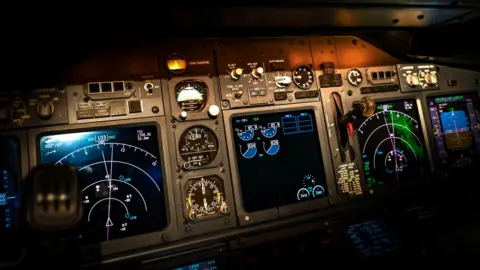The preliminary report into the crash of Air India Flight 171, which tragically claimed the lives of 260 individuals in June, has ignited heated discussions rather than providing closure. The report, spanning 15 pages, highlights a critical event that adds to the complexities of the investigation. Just moments after take-off, both fuel-control switches on the Boeing 787 were found in the "cut-off" position, leading to a devastating loss of power—an action usually reserved for after landing.
Cockpit voice recordings reveal a conversation between the flight's captain and co-pilot that raises questions about the decision-making in those critical seconds. One pilot queries the other regarding the engine shutdown, but the recording does not specify who operated the switches. At the time, the co-pilot was at the controls while the captain monitored the flight.
In response to the preliminary findings, various theories have surfaced about the cause of the crash, shifting attention particularly toward the actions of the senior pilot. The Wall Street Journal and Reuters have reported on claims suggesting that the first officer sought clarification from the captain about why the engines were turned off. This speculation has stirred significant unrest within the aviation community, leading to a backlash against the media's handling of the situation.
The Indian Aircraft Accident Investigation Bureau (AAIB), the lead agency in the investigation, has condemned specific media reports for hastily drawing conclusions based on partial information. Jennifer Homendy, from the National Transportation Safety Board (NTSB), has also criticized premature reporting, emphasizing that thorough investigations require time.
Both pilots possessed substantial experience—over 19,000 flying hours combined— and had passed all necessary health checks prior to embarking on the ill-fated flight. The ongoing speculation has frustrated investigators and angered pilot associations in India, leading to calls for restraint and patience until the investigation reaches conclusions.
At the crux of this ongoing dialogue is the brief snippet of conversation obtained from the cockpit voice recording. While various interpretations exist, ultimately, the inquiry remains open. The nature of cockpit communications early in the flight and the incomplete disclosure of the full transcript have fueled doubts about the pilots' actions and intentions during the flight.
Experts advocate for careful attention to the available data from the flight data recorder in conjunction with a complete analysis of the cockpit voice recording instead of jumping to conclusions. The AAIB has stressed the importance of analyzing the broader context, including aircraft maintenance history and possible technical malfunctions that could have contributed to the incident.
As new updates and analyses are anticipated, the investigation continues to seek answers, focusing on discerning whether pilot actions stemmed from confusion, a malfunction, or intent. As the aviation community awaits the final report, the incident underscores the vital need for transparency and responsibility in the unfolding of such tragedies.





















